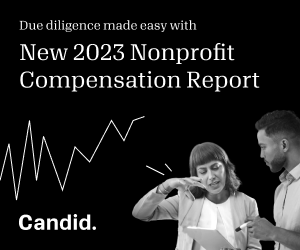Unlocking capital and enhancing visibility and support for AAPI organizations

Amid rising violence against the Asian American and Pacific Islander (AAPI) community, our 2023 STAATUS Index study, a national survey of American attitudes toward the AAPI community, brought more sobering news: Roughly half of Asian Americans report feeling unsafe in the United States due to their race or ethnicity, with just 22 percent indicating they fully feel a sense of belonging and acceptance. Like Black (24 percent) and Hispanic/Latinx (25 percent) respondents, Asian respondents fell well behind white Americans (57 percent) in their sense of belonging. Further, among Asian American respondents who said they felt a lack of belonging, 57 percent cited racial discrimination as a main cause. And 43 percent said they didn’t see others like themselves in positions of power.
We have a problem.
Philanthropic funding can offer a powerful solution by strengthening programs that can help to reduce discrimination and violence against our communities. While violence targeting many races and ethnicities is on the rise, violence against Asian Americans is acutely higher, a trend that may have stemmed from the COVID-19 pandemic but seems to have longer staying power. We have an opportunity to help one another.
A 2021 report from Asian American/Pacific Islanders in Philanthropy (AAPIP) found that of all grantmaking dollars in 2018, just 0.2 percent was designated for AAPI communities. That’s down from a peak of 0.6 percent in 2009, and it comes despite an opposite trend in representation. AAPI individuals now comprise roughly 7 percent of the U.S. population, up from 4.2 percent at the turn of the millennium, making them America’s fastest-growing major racial/ethnic group.
This is a moment to create a strong infrastructure of resources and assistance for organizations dedicated to AAPI philanthropy.
Here are three ways to get there:
1. Unlock capital for AAPI organizations and causes. We must encourage the flow of capital to help meet urgent needs in the AAPI community. When we launched The Asian American Foundation (TAAF) in 2021, we initiated the AAPI Giving Challenge. Through the program, more than 130 corporations, foundations, and individual donors pledged a total of $1.1 billion in funding and resources to benefit AAPI communities, organizations, and related causes over five years. In turn, capital can help raise AAPI representation—for example, to elevate AAPI leaders, who, like Black and Hispanic/Latinx Americans, are severely underrepresented in executive ranks relative to their proportion in the workforce—and fund narrative efforts to combat harmful stereotypes, both long-term proactive efforts to fight anti-Asian hate.
2. Increase visibility of AAPI organizations. In addition to obtaining the necessary funding, we must increase the visibility of AAPI organizations that work to help and protect the AAPI community. To address the resource shortage and raise awareness about frontline organizations working tirelessly across the country, TAAF introduced the AAPI Nonprofit Database, an interactive resource that’s inclusive and regularly updated. Created with help from Giving Challenge partner Walmart and the Walmart Foundation’s Center for Racial Equity, the database enables funders and volunteers to connect with organizations of all sizes giving AAPI communities the direct support they need to thrive.
3. Invest resources in the right places. In an era where anti-Asian violence has worsened, it’s more important than ever to equip our community with the resources to address both the institutional and structural racism that impacts their everyday lives. There are no one-size-fits-all solutions, so initiatives in one community may not be appropriate for its neighboring community. Committing resources to trusted organizations—or even giving them the power to regrant to other local organizations—can help people closest to problems determine the best solutions. Funders should strive to listen and understand the root causes of problems to identify where they can bring value. In some cases, the solutions may already exist, but access is limited due to cultural or language barriers.
Programs that support the AAPI community alone won’t counter the uptick in anti-Asian violence or the decreased sense of belonging and the lack of representation in private and public leadership. But effective programs with sufficient resources, including capital and talent, can make an impact by driving awareness, action, and empowerment. As we work to replace hate with belonging, let’s remember that we’re all in this together.
Norman Chen is CEO of The Asian American Foundation.




